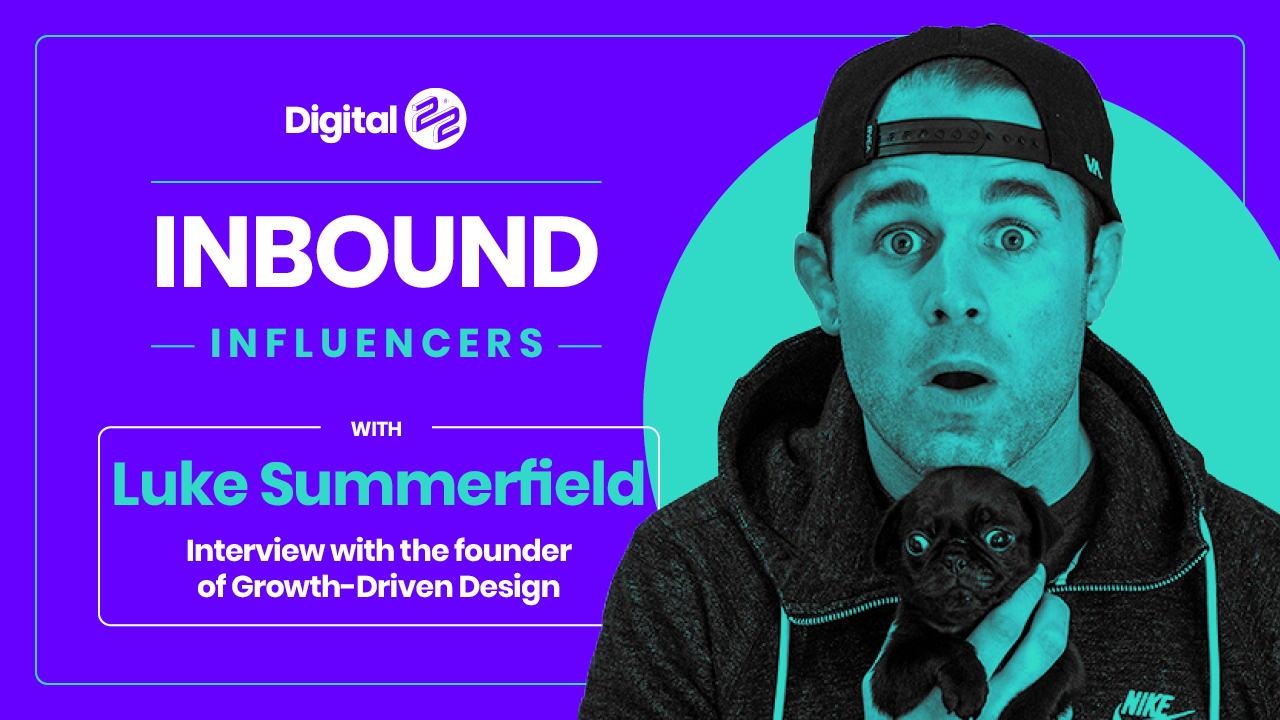How much does a new website cost? 5 ways to make your investment worth it
There’s no exact figure on how much it would cost to create a new website for your business. You could spend thousands or you could even get away with building it yourself. It all depends on the type of website you need and the platform you choose. Based on industry averages, a ‘basic’ website could cost up to £500, but if you want the full shebang with advanced functionality, we’re talking around ten thousand big ones.
But the price tag isn’t a true reflection of how much your website is actually worth. A lot of work should go into your website afterwards rather than letting it get stagnant, so here are five ways you can make your website investment worth it.
- Leverage social media
- Create engaging blog content
- Craft innovative inbound campaigns
- Utilise SEO to start ranking
- Make use of email marketing
1. Leverage social media
There’s a massive chunk of potential customers on social media just waiting to find you, so if you aren’t active on social media, you’re missing out. Not only is it an effective way to engage with users and build up anticipation of your website launch, but it also shows you’re active.
Let’s say you have social media accounts but you’ve neglected the strategy since day one. Prospects might stumble across your profiles, realise you tweet or post something on LinkedIn once in a blue moon and assume you aren’t active. Your competitors who utilise social media correctly, respond to queries and push out content their users end up sharing? They’ll happily pinch the traffic you could have gained.
Your website can only do so much by itself. You need to create a social media strategy that pushes your website, products and services on your social accounts. By creating this distinct online presence, you improve your overall branding; you gain valuable analytics and most of all, you can increase your website’s traffic.
2. Create engaging blog content
If you don’t already create content, it’s time to adopt a content marketing strategy. Like your social media cadence, posting one blog every few months isn’t going to cut it. Populate your blog regularly with engaging, informative content with your readers’ pain points at the heart of your copy.
Start by selecting the most relevant keywords and shape your blog content around while providing value to readers. When you do this, your website doesn’t sit still and the keywords you choose will help you rank in search engines, like Google. Ultimately, this means more traffic to your website and more traffic equals more leads.
You’d be the authority. The website readers visit when they need a problem solving, having read content from you previously that satisfied them. There’s nothing to lose. More people on your website can only mean more bookings, more purchases, more reservations, more submissions - more of what you want your audience to do.
3. Craft innovative inbound marketing campaigns
Inbound marketing groups several strategies together, such as content marketing, social media and SEO, but it’s something your website will benefit from. Inbound marketing aims to strategically generate new, qualified leads where your website (along with content and social media) help nurture leads and convert them into customers.
By using inbound tactics and running methodical inbound campaigns, you can bring more traffic to your website. During these campaigns, you should use high-value content and strategically place calls-to-action (CTAs) to turn visitors into new leads. When you set up all your different strategies and inbound campaigns, you can turn your website into one big lead generation machine.
Reports show companies using inbound marketing tactics, campaigns and software get up to three times as many website visitors and nearly four times as many leads. Inbound software like HubSpot can also help you collate the history of how every single lead interacts with your website - allowing you to make necessary changes.
Use your website to attract the leads you want so you can nurture them. Or, you can adopt the Growth-Driven Design (GDD) approach, which links perfectly with inbound marketing.

Both GDD and inbound marketing make sure you aren’t stuck with the same website failure for months. By implementing new concepts of your marketing strategy, you can apply data insights so your website and campaigns continue to improve. I’ll be honest, GDD is a whole different ball game in itself, but if it’s a methodology you want to try to constantly improve your never-finished website, make sure you bookmark this guide.
4. Utilising SEO to start ranking
Today, good SEO goes beyond using the right keywords in the right places. To make your website investment worth it, you also need to create engaging content, a strong link profile and an unbeatable user experience. SEO is something you need to stay on top of, especially at the rate Google continues to tweak its algorithm, meaning you can’t afford to slip up and fall behind.
This is something that starts well before launch. For example:
- Map out redirects: Redesigning an old site? Map out a page for each old URL to redirect to so you can send users to the correct page if they accidentally navigate to your old website
- Navigation: Design your website’s navigation with what your customer wants, not what necessarily fits the design
- Test, test, test: Test for usability so the launch is a success. Test on multiple browsers, devices and for readability so you’re on the right track
- Meta descriptions and title tags: Avoid cutting corners for the sake of going live quicker. Ensure every page on your website has keyword-optimised title tags and meta descriptions
- Responsiveness: Mobile-first indexing means your website needs to be friendly for SEO to stand a chance. Build a responsive website so your mobile audience have a good experience too
But then it goes one step further. You need to implement those 301 redirects. You need to get set up on Google Analytics and Google Search Console. You need to continue doing keyword research. You need to continue fixing your website. You need to continue creating relevant, engaging content.
All of this makes a huge difference. Especially since 2020, your website has become your new shop window. You can’t set it up and leave it to fend for itself. It needs to grow and scale with you, your audience and your industry. Focusing on all of the SEO aspects will ensure your website is always relevant in Google’s eyes and it lands on the right screens.
This will help build your brand. You’ll become an authority and will attract visitors with no trouble. That’s the sort of brand awareness you need - one where you can make sales and, in the future, lead to visitors coming directly to you rather than via Google.
When you go all-in on SEO and see the results, that’s when you’ll know your investment was worth it.
5. Make use of email marketing
Your website is valuable when it comes to driving conversions. This is a marketer’s ultimate goal, too: turn potential customers into paying customers. As useful and necessary as content marketing, SEO and social media are, nothing is more powerful to drive conversions than email marketing.
Did you know the average click-through rate of an email campaign is around 3% of total recipients and 0.5% for a tweet? That means you’re six times more likely to get someone clicking through to your website via your email marketing strategy than Twitter. Plus, if you’re nurturing leads through email, that’s a ready-made database of people who want to hear from you.
On your website, you can offer visitors a way to sign up for your email newsletter. Even if visitors don’t visit your website for a while, once they opt-in to receive your marketing materials, you can nurture them and send them to different areas of your website. Why not offer an incentive while you’re there? Throw in a free eBook or a discount to keep them interested.
DID YOU KNOW YOU'RE:
SIX TIMES MORE LIKELY TO GET SOMEONE CLICKING THROUGH TO YOUR WEBSITE VIA AN EMAIL THAN TWITTER?
Email marketing is another great lea generation opportunity, alongside the usual contact us pages, live chat, requesting quotes and more. Or, if you’re an eCommerce business, you can even use email marketing to send automated emails upon incomplete checkouts. There are plenty of options with email, all designed to nurture your leads and have them visit your website when they’re ready to buy.
By utilising these tactics, the initial investment is worth it. If you shell out thousands on a new website and let it sit and gather dust, you won’t see any of the benefits. Invest in other channels to help your website grow and scale with you. But if you need more help on maximising your investment, we have a bank full of plays you can swipe right now.
So… you’ve just had a new website built - now what?
If you have a brand new website and are concerned a lack of attention won’t get you the results you need, you’re right; it probably won’t. But you don’t need to let the investment go to waste. We’ve created a playbook with some quick and easy-to-swipe plays designed to help you maximise your website investment.
Ready to take your website up a level and constantly improve your biggest marketing asset? Check out the playbook below to gain the unmissable insights.
Real Growth. Real Impact.
HubSpot Website Design Impact Award WINNER: Custom-built but easy to manage: a HubSpot CMS case study
HubSpot vs. WordPress vs. Drupal
GDD 101: How to Impact Score Your Wishlist Effectively
Why You Should be Using Hotjar for Growth Driven Design
How to Create a Sitemap for Inbound Success
What do the First 6 Months of Growth Driven Design Look Like?
Growth Driven Design, HubSpot and Inbound - The Holy Trinity
See why enterprises choose Avidly
Let’s build your HubSpot success story
Compelling final call to action - with accompanying link to Contact page









